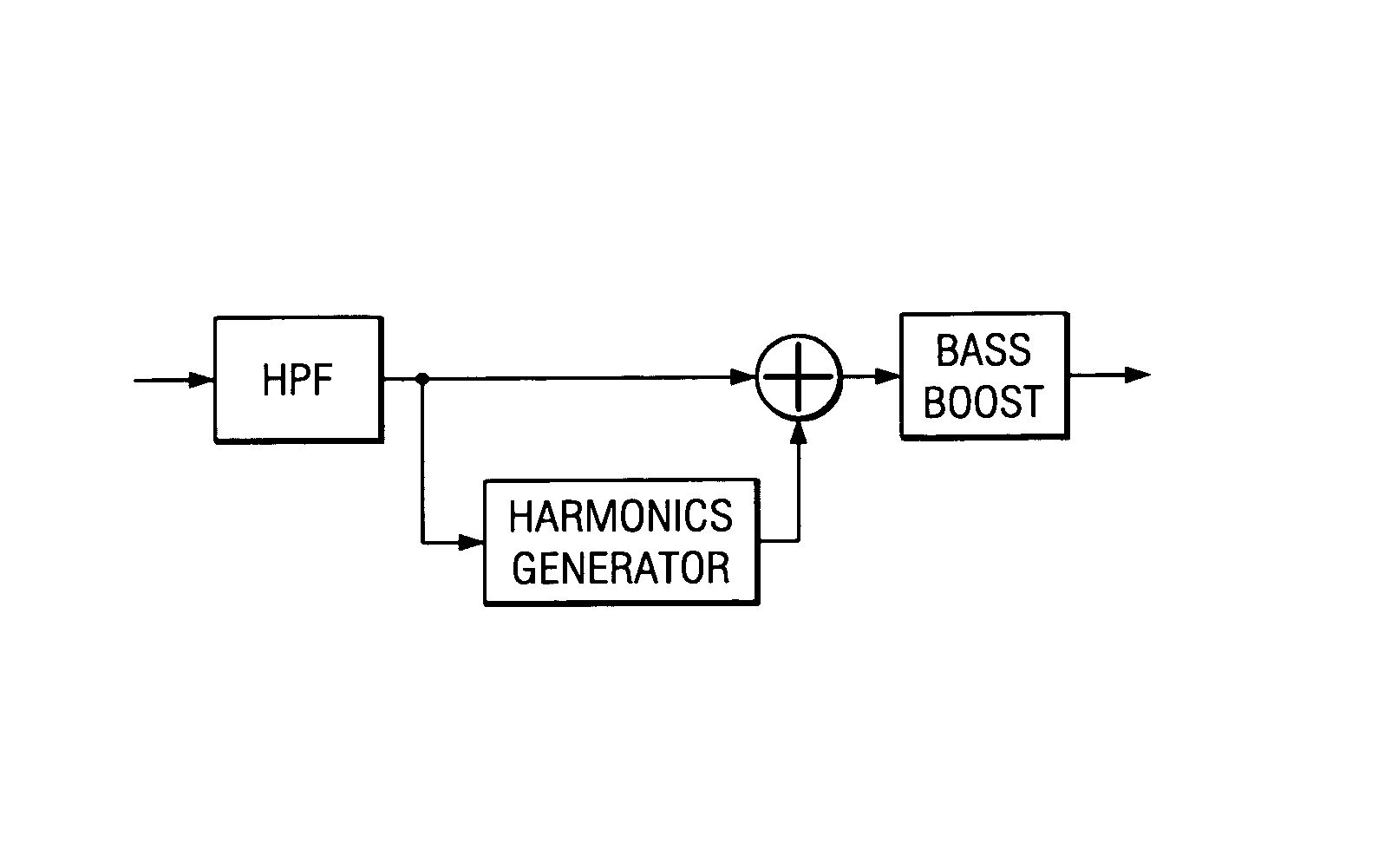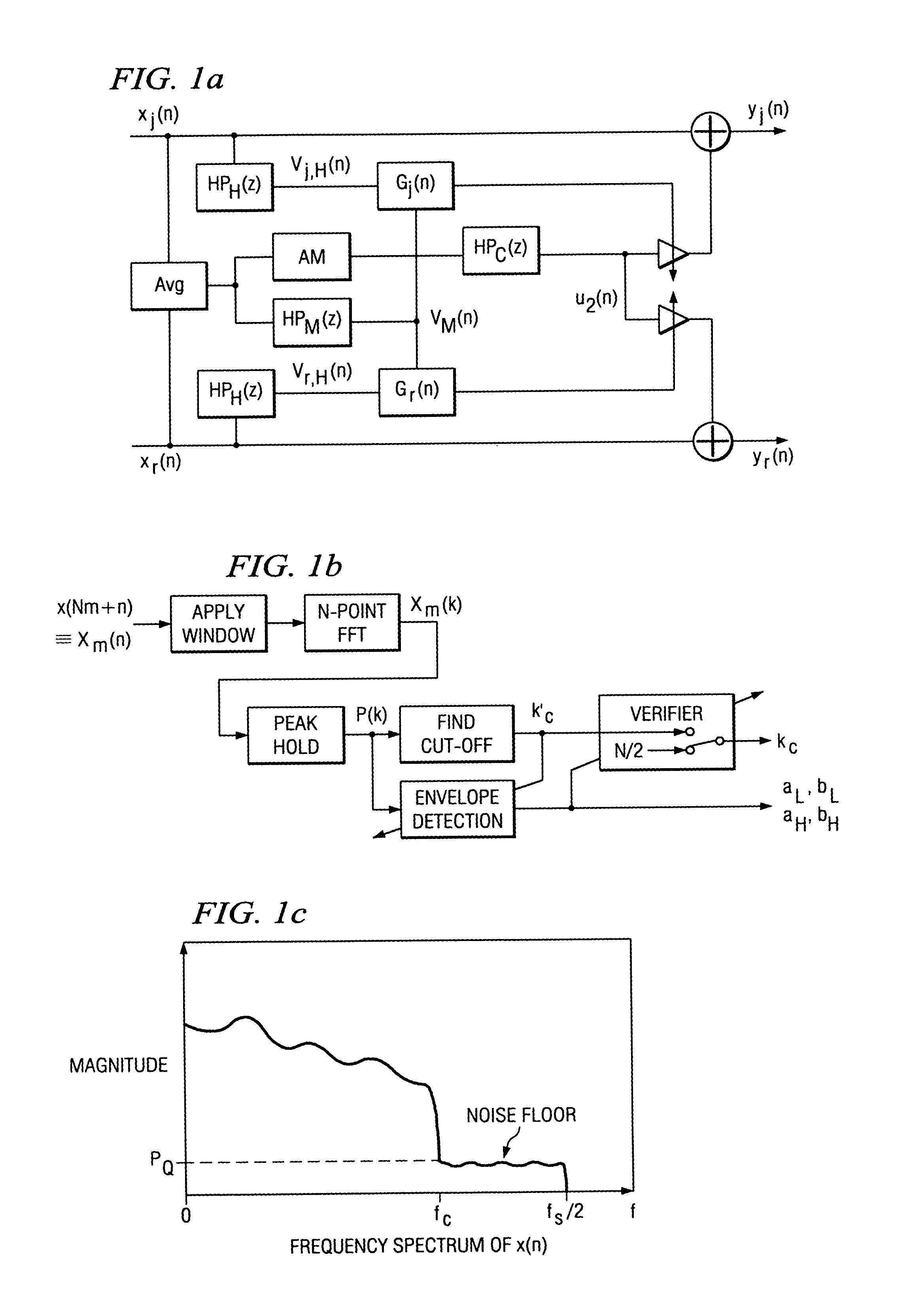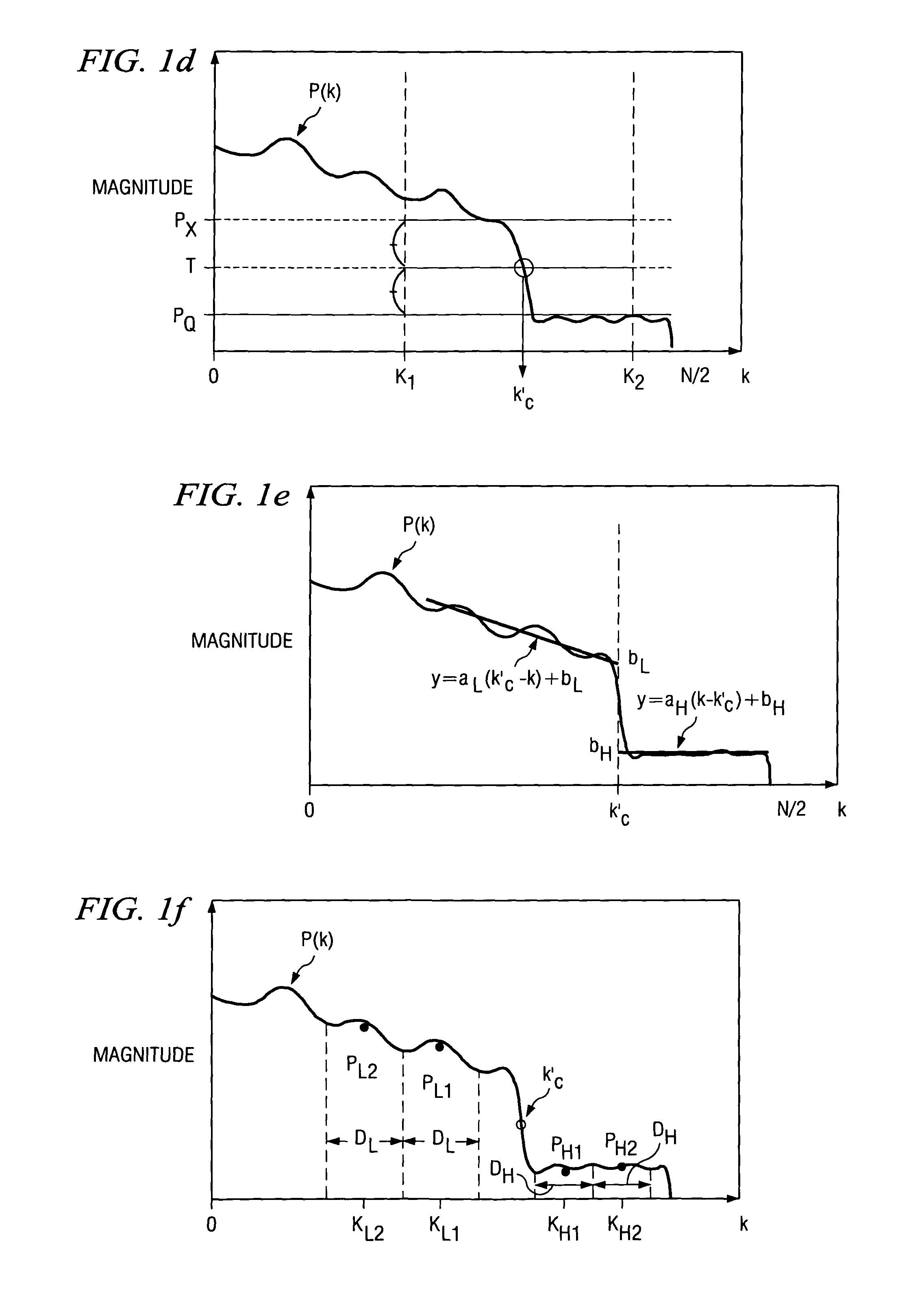Audio bandwidth expansion
a technology of audio frequency and expansion, applied in the field of digital signal processing, can solve the problems of time domain aliasing, perceptual distortion, limited bandwidth of audio frequency,
- Summary
- Abstract
- Description
- Claims
- Application Information
AI Technical Summary
Benefits of technology
Problems solved by technology
Method used
Image
Examples
example values
are
KH1=kc′+N / 16, KH2=kc′+N / 8
With these values aH and bH can be computed by just switching L to H in the foregoing.
[0046]In the preferred embodiment method, the candidate cut-off frequency kc′ is verified as
[0047] kc=kc′if(bL-bH)>b=N / 2otherwise
where kc is the final estimation of the cut-off frequency, and , is a threshold. The condition indicates that there should be a drop-off larger than , (dB) at kc′ so that the candidate can be considered as the true cut-off frequency.
[0048]There are many other possible ways to verify the candidate cut-off frequency kc′ using aL, bL, aH and bH. Another simple example is
bL>>bH
This condition means that the offsets should be on the expected side of the threshold. Even more sophisticated and robust criteria may be considered using the slopes aL and aH.
[0049]5. BWE in time domain
[0050]FIG. 1g shows the block diagram of a preferred embodiment time domain BWE implementation. The system is similar to the preferred embodiment of sections 2 and 3 ...
PUM
 Login to View More
Login to View More Abstract
Description
Claims
Application Information
 Login to View More
Login to View More - R&D
- Intellectual Property
- Life Sciences
- Materials
- Tech Scout
- Unparalleled Data Quality
- Higher Quality Content
- 60% Fewer Hallucinations
Browse by: Latest US Patents, China's latest patents, Technical Efficacy Thesaurus, Application Domain, Technology Topic, Popular Technical Reports.
© 2025 PatSnap. All rights reserved.Legal|Privacy policy|Modern Slavery Act Transparency Statement|Sitemap|About US| Contact US: help@patsnap.com



